And Then It Was Over
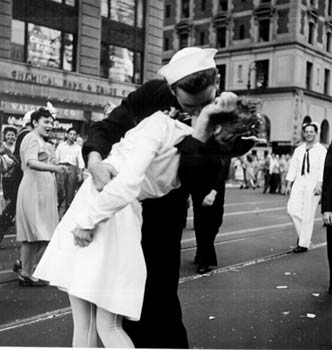
Editor’s Note: The pain incurred at the loss of an old friend dulls over time, but there is always something that will bring you up short with sudden regret. It was seventy years ago that the Emperor Of Japan gave up. Our Pal Mac Showers was at Chester Nimitz’s Forward Headquarters at Guam, chief of the Estimates Section that was helping to plan the invasion of the Home Islands. His private opinion was that Operation DOWNFALL would entail the death or wounding of a million young American men.
The picture above is how people felt about it in the States. It should be hauntingly familiar- it is the iconic sailor and nurse are the ones made famous in a photograph by Alfred Eisenstaedt tin Times Square in New York. This is a near-simultaneous image captured by Navy photojournalist Victor Jorgensen. As a Government employee working on Government time, his picture is in the public domain, and the estate of Mr. Eisenstaedt can’t bust me for violating their ownership rights.
The War was over. Everyone left alive would stay that way.
At least for a while.
I had hoped that I would celebrate the 70th anniversary of VJ Day- the final end of the most horrendous conflict in human history- with Mac at the Willow. By the time the next round number comes around for the observation, the survivors and veterans will be as sparse as the Civil War Drummer Boys of my youth. It didn’t work out that way. But at the last one for which we were together, he remembered.
He remembered for all of them.
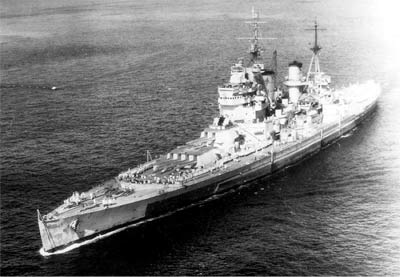
(HMS King George V (41)- “Cagey Five”- enters Apra Harbor, Guam, with sailors manning the rail in August, 1945. Photo National Archive 80- G- 328942)
I picked up my pen after inhaling a deep draft of an impertinent white wine. “Now, where were we?”
Mac looked at me with a twinkle. “You never know where to start, do you? Why not at the beginning. That is a good place to start.”
“Nah,” I said. “I like to jump around. I think I might have ADD.”
“You think?” growled Old Jim.
“The alcohol helps,” I said. “What with the word that the Navy is going to start using breathalyzers on sailors when they come on the ship. It is ridiculous.”
“I heard that,” said Mac. “Would not have been popular in my day.” He took a sip of Bell’s, a fine golden lager out of Kalamazoo, Michigan. His duck tacos arrived on a rectangular white plate and he began to nibble on the dark morsels.
“It is like they want to make General Order Number One permanent,” I said indignantly. “You guys won World War II and you had a wine mess at the forward headquarters on Guam.”
“Yes, we did.”
“Well, let me ask you this. Your Boss Eddie Layton almost punched out Admiral Richmond Kelly Freaking Turner onboard the USS South Dakota at the end of the war. Turner was drunk onboard ship.”
“So was Eddie,” said Mac. “There was probably more alcohol flowing on that ship the night of the victory as ever was poured on a man-o-war. People used to ask me how I tolerated Eddie, but he was always OK with me.”
“That is an interesting cultural snap-shot,” I said. “What about Admiral Nimitz? Did he drink?”
“Never saw him do so,” said Mac. “He may have had a glass of wine with dinner, but he certainly wasn’t a booze-hound like some of them were.”
“Did you ever socialize with the Fleet Admiral?” I asked.
“Not really. Well, wait, there was one time.” He took a bite of duck and looked pensive.
“Was that on Guam?”
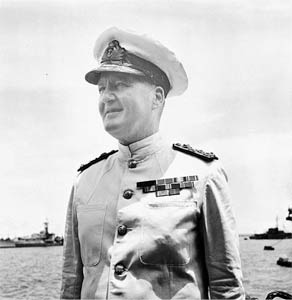
(Admiral Sir Bruce Fraser, Commander in Chief of the British Pacific Fleet. Photograph taken on board HMS Duke of York at Apia, Guam, 1945. Photo Imperial War Museum.)
Mac nodded. “Yep. Admiral Sir Bruce Fraser- F-R-A-S-E-R” he spelled out as I scribbled, “He brought HMS King George V into Apia to present Nimitz with the Order of the Bath.”
“Wow. Were you there for that?”
“Yes, I was. The Admiral sent out a note that anyone who had a set of dress whites could go out to King George V- Cagey Five, we called her- and attend the ceremony. I happened to have a set of whites, and I was included in the party. It was around August 12th, 1945, I think.”
“Did the Admiral drink at lunch?”
“Dunno. He and Fraser went to the Flag In-port Cabin, and the rest of us were in the wardroom with the Brit officer s . We had lunch, and then we drank all afternoon, and then through dinner.”
“That must have been pretty fun. I have gotten smashed on Canadian warships, the last time being at Fleet Week in San Francisco in ‘98. I miss a civilized wardroom.”
“This was on the way to not being so civilized, so we decided to get the boat and go back ashore. We were walking down the brow to board when we heard Cagey Five’s 1MC crackle to life. The Captain announced that the Imperial Japanese government had made a decision to honor the terms of the Potsdam Declaration.”
“What a moment,” I said in wonder.
“Yes indeed. It may not have been official, but we turned around and climbed back up and had more drinks in the wardroom before we finally went ashore to sleep it off. On the way we stopped to ask Colonel Purple, the crusty old senior Marine on the staff, if he had heard anything, and he said he hadn’t.”
”Wasn’t that the guy whose house you flooded when your car hit the fireplug out front?”
Mac smiled. “Yes, it was. He didn’t think much of the junior Navy officers.”
“That was funny. But as to the merriment, you were entitled to it,” I said. “It meant that everyone was going to live, and no one was going to have to die in the invasion of the Home Islands.”
“Everything changed. Everyone had a different reaction, and most just wanted to go home as fast as possible.”
“Except you.”
Mac nodded. “I didn’t have a job to go home to. I joined the Service right out of college. I was single. I liked the Navy.”
“It was a Navy that I remember, but is just a fading memory now.”
“I think you will be surprised by that. Any institution that has survived a couple centuries will probably survive what is going on now.”
“I hope so. I sure had fun in my Navy.”
“So did I. The next day we resolved to host the Brits ashore in thanks for the open bar in their wardroom on Cagey Five. Then they had us back. It went on, back-and-forth, for four days.”
“Sounds like fun,” I said, taking a sip of happy hour white from a glass that never seemed to get dry.
“It was. But by the time the actual surrender was announced by Hirohito on the 15th everyone had been partying for days. I went up to the club at Nimitz Hill to have a cocktail to commemorate the day.”
“Must have been wild,” I said.
Mac shook his head. “Nope. It was kinda funny. There was no one there. Too much merriment over the last four days, and no one came.”
“Not quite what I would have expected,” I said, putting two fingers across the side of my glass and winking at Liz-S.
“Well, that pretty much sums up the whole thing, in my experience,” said Mac. He dipped the last bit of duck in a dash of hoisin sauce, and happily popped it in his mouth.
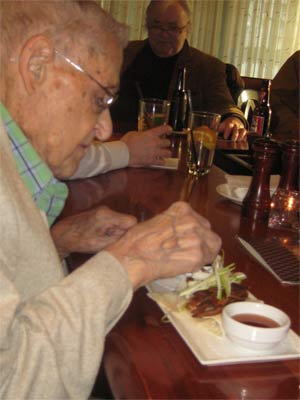
Copyright 2015 Vic Socotra
www.vicsocotra.com
Twitter: @jayare303
Put Up Your Dukes
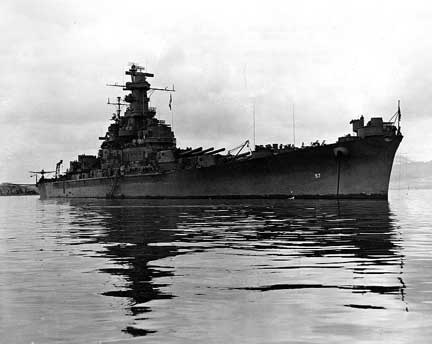
(USS South Dakota, (BB-57) in war colors as Flagship of the Pacific Fleet Commander, Fleet Admiral Chester Nimitz. Official Navy Photo).
I was going to write about cars this morning- it is the time of the season when the people with whom I share the mad eccentric passion for the wheels of yesterday are out and rolling. But this date is also something significant on the life of the Republic and the world.
On this day in 1945, an official announcement of Japan’s unconditional surrender to the Allies is made public to the Japanese people. It was not VJ Day, that is tomorrow, celebrated here on this side of the Date Line. But it is the day the Japanese war cabinet decided to throw in the towel, and I will let the vanquished express the anguish before turning my attention to the last man I will ever know who lived this.
The timeline is a little jerky: the War Council, urged by Emperor Hirohito, had submitted a formal declaration of surrender to the Allies on 10 August, though fighting continued between the Japanese and the Soviets in Manchuria, and between the Japanese and the United States in the South Pacific. Two USN ships, the Oak Hill (LSD-7) and Thomas F. Nickel (DE-587) were sunk by IJN submarine attacks east of Okinawa.
In the afternoon of August 14, Japanese radio announced that an Imperial Proclamation accepting the terms of unconditional surrender drawn up at the Potsdam Conference would be broadcast by the Emperor. The news was not met with universal acceptance. More than 1,000 Japanese soldiers stormed the Imperial Palace in an attempt to find the proclamation and prevent it from being given to the Allies. Soldiers still loyal to Emperor Hirohito held them off.
That was then. This morning, the Japanese continue to honor 14 August as the day their world changed forever. Prime Minister Shinzo Abe said that Japan’s past “heartfelt apologies” for World War II will remain unshakeable in the future. He went on to express “profound grief” for all who perished in the war and acknowledged that Japan inflicted “immeasurable damage and suffering” on innocent people.
Abe’s statement included these words: “On the 70th anniversary of the end of the war, I bow my head deeply before the souls of all those who perished both at home and abroad. I express my feelings of profound grief and my eternal, sincere condolences.”
All that said, he noted that more than 80 percent of the country’s population was born after the war and had nothing to do with the war. I don’t know if he is serious about the notion that generations who are not responsible for the bloodbath be condemned to continually apologize to people who also were not there.
I will probably never again know someone who was there and lived the events that transformed the world, but I was lucky enough to have one of the best friends a guy can have. That is why I turn back this morning to the same week five years ago, and sitting at Willow with a Great American, one of a generation whose like we may not see again. We were with Mac Showers, and the memories flood back with the breath of August in Washington, and the cool darkness of the Willow Bar:
The bill was paid, and people were starting to drift out of the bar area and over to the restaurant side of Willow. It was Restaurant Week, after all, and the prie fixe menu with choice of appetizer, entrée and dessert for $35 bucks is an attractive deal. Tracey O’Grady is always trying innovative things at Willow, and that is one of the reasons it is so much fun.
We need some fun. It could be that the recession is finally going to come to Arlington, which has ignored it thus far. At least the Defense sector has, what with two or more wars running through the decade. “Secretary Gates says he is going to retire next year, and take the national security succession issue out of the Presidential equation,” I said.
Mac was straightening the stack of books and papers he had brought to the bar to aid the discussion. “He has done a fine job. One of our better Secretaries, in my judgment, and I have seen them all come and go, from James Forrestal on.”
“It sure was a different world,” I mused, looking at the empty wine glass in front of me. “I heard the Chinese are asserting sovereignty over the Senkaku Islands west of Okinawa.”
“Oil, I would imagine,” said Mac. “The islands were part of the U.S. military mandate that we gave back to the Japanese in 1972 along with Okinawa. The Administration doesn’t seem to have the grit to explicitly tell the Chinese that they are Japanese territory, and subject to the provisions of the mutual defense treaty.”
“I guess we don’t want to irritate the Chinese,” I said. “But it seems like we are going to look like a Paper Tiger. If we cut carrier strike groups in the defense retrenchment, and the ASEAN nations are afraid to let us land-base the Air Force in Asia, what the hell do we think we have as a credible threat? Send a couple carriers against the whole of China?”
“Certainly is a policy conundrum,” said Mac. “It is a complete circle from 1940, only with Japan playing the role of today’s China. Article 5 of the 1960 “Treaty of Mutual Cooperation and Security” with Japan states clearly that it specifically applies to the Senkaku Islands. Try as Secretary Clinton might to soft pedal things, it is hard to get around that.”
“It seems like we are surrendering the issue without discussion,” I said. “Like when the Japanese strafed the American gunboat Panay on the Yangtze River after the Rape of Nanking in 1937.”
“Yes indeed. And we did not respond, and four years later, the Fleet was on the bottom of Pearl Harbor. Take your stand, put up your dukes. It is pay me now or pay me later.” Mac leaned forward. “I will give you a last story before we go.”
I picked up my pen and flipped to a clean page on the note pad I lifted from the US Senate years before.
“Eddie Layton was one of the few guys who saw the beginning and the end of the war, said Mac quietly. “He started it in Admiral Husband Kimmel’s office on the day of the attack. It is quite a professional tribute to his abilities that Admiral Nimitz took him along as his personal guest to the Surrender in Tokyo Bay. Eddie actually masqueraded as his bodyguard and carried a pistol. As a member of the Pacific Fleet Commander’s official entourage, Eddie was quartered in USS South Dakota, (BB-57).”
“She was a battle wagon,” Mac continued “New construction in 1939, and she had thirteen battle stars before it was all over. Seven hundred feet long and bristling with guns, she carried twenty-four hundred officers and men, plus the embarked staff, if there was one. She had a Panamax beam on her, built to within inches of fitting through the locks on the Canal, so she was roomy and the wardroom was vast.”
“I have been in the wardroom on Alabama, one of her sister ships,” I said. “It was a lot different than the carriers I rode. Stately. I think they had cutlass racks on the quarter deck.”
“They probably did. It was a the continuation of an old tradition, carried almost to the ultimate level that the four Iowa-class battlewagons represent. Halsey was embarked in Missouri in Tokyo Bay for the surrender, and Admiral Nimitz took South Dakota as his.”
Mac chuckled. “She was a ship that set a unique record. A twelve-year-old managed to sign up for the Navy after Pear Harbor, and he actually got assigned to her in time for the battles in The Slot. He was wounded, too. Calvin Graham was his name,” Mac said with satisfaction. “You can look him up. He wound up getting a Big Chicken dinner- a bad conduct discharge- when his Mother disclosed his real age.”
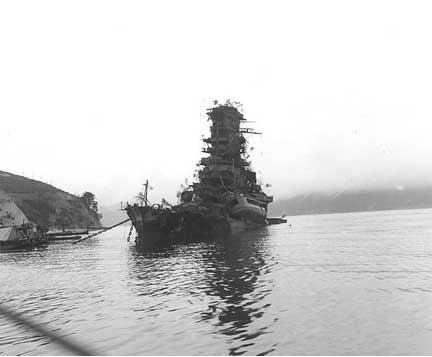
(Collapse of Japan. The rebuilt battle cruiser Haruna was sunk at her moorings in the naval base of Kure on 24 July, 1942. Official Navy Photo)
South Dakota had the same sort of wild change of circumstance that everyone did. In early August she was shelling northern Honshu and supporting carrier strikes against Tokyo, right up to the last surface action of the War on the 15th of August. On September 2nd, she was anchored in the Sagami Wan with Admiral Nimitz and his guests on board.”
“Eddie told me about it later. He was not senior enough to see the ceremony, but he said it was honor enough to be there. Following the signing of the instrument of surrender, the Allied delegates and spectators began to leave Missouri. General MacArthur boarded a destroyer to be transported back to Yokohama. Admiral Nimitz left by boat after that and was soon back on board South Dakota. Halsey stayed on his flagship, and enjoyed a conversation with his old friend, VADM John S. McCain, who would die of a heart attack just four days later. That would be Senator John McCain’s grandfather.”
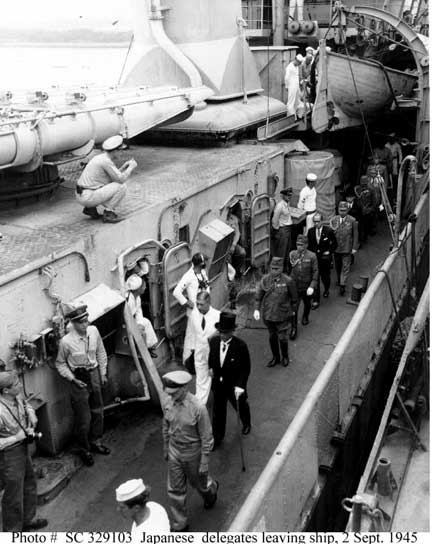
“Stress,” I said. “Pity to live just long enough to see the end of it, and not the beginning of the new world.”
Mac nodded. “So here is where it gets interesting. Eddie Layton was playing acey-duecy in the wardroom of South Dakota when Admiral Richmond Kelly Turner strode into the room. “Terrible” Turner was in a state of high excitement. He was another of Admiral Nimitz’ personal guests. He executed all the amphibious landings in the Pacific, from Guadalcanal to Iwo Jima, after all. But he was a son-of-a-bitch to his staff, and liked the bottle. Eddie said he was pretty fired up that evening. He started to shoot his mouth off, and the wardroom hushed at the remarkable sound of the inebriated four star’s booming voice.”
“What was he saying?” I asked.
“He was going off on Admiral Husband Kimmel, of all things. Something to the effect that “Goddamned Kimmel had all the information and he didn’t do anything about it. The court of inquiry said so, and they ought to hang him up higher than a kite!”
“But it was Turner himself who did not allow the critical Bomb Plot messages go to Pearl Harbor!” I exclaimed. “He must have known that. The court of inquiry was a white-wash to scapegoat Kimmel and General Short.”
“Eddie sat there, stunned at what he was hearing. He had been there at the beginning, and was with Kimmel in the attack. Here at the end of it, the architect of the disaster was shouting that Kimmel ought to be hung up by his fingernails.”
“I guess you can’t do anything against four stars,” I said thoughtfully, trying to imagine the scene with any of the other four-stars I have known in my life.
“Well, Eddie got pretty fired up, too. He corrected Turner in mid-rant. He told the Admiral that he had been there as Kimmel’s intelligence officer, and he had been there in person on December 7thyh, 1941.”
“So what happened?”
“Eddie said the Admiral charged across the deck and grabbed him by the throat. Eddie was putting his dukes up to pummel the Admiral when the skipper of South Dakota, Emmet Forrestal, got in between them and broke it up.”
I looked at Mac with amazement. The idea of decking a four-star Admiral made me admire Eddie Layton even more.
“Why on earth did Admiral Nimitz put up with Turner?” I said. “The man seems to have been unstable, and even if his war record was good, his poor judgment at the beginning is what contributed to bringing on the disaster.”
Mac looked at me thoughtfully. “Admiral Nimitz always believed a man should get a second chance, since he got one himself as a young officer. Turner got his second chance after he screwed up in War Plans before the war. The cover-up of the whole ugly matter split a generation of senior officers and fueled a political and historical controversy over who was to blame for the Pearl Harbor disaster.”
“Not to mention that fact that the war over who controls Signal Intelligence has continued right down to this year. We even had different officer designators for the Cryppies and the Intelligence officers, and never the twain did meet until sixty-five years later.”
“I could have been either,” said Mac, gathering up his papers. “But of course, that is another story.”
Copyright 2015 Vic Socotra
www.vicsocotra.com
Twitter: @jayare303
Concept Cars
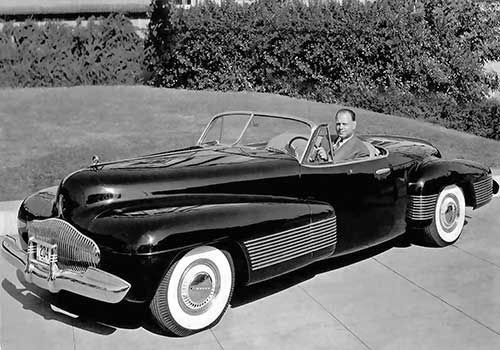
(GM VP Harley Earl in the forward-leaning Buick Y-Job, a concept car that became a prototype. Photo General Motors).
I got a note from an alert reader in New Mexico this morning who asked what the difference was between “concept cars” and “production models.” It was a good question, since the lines blur. The question arose from the description of the amazing 1955 Hudson Italia we talked about yesterday. Since there were 26 of them on the road, wouldn’t that make them not a concept, but a limited production model?
Well, yes. But it is more complicated than that. The Italia was designed to be sold in small numbers, but the vicissitudes of capitalism and corporate mergers left the model high and dry. The cost of the fancy European sheet metal also made them as expensive as a Cadillac Coupe de Ville, so it would have had a hard time competing in the market. But Hudsons wanted to make a last gasp statement that it was cool, and so there was the Italia.
The simple (and incorrect) answer is that there are production cars and there are concept cars. The former is what you can buy at a dealer; the latter is part R&D, part proof of concept, and part pure marketing.
The Italia- limited to only 25 plus the first concept model- was a sort of hybrid There was a real intent to convert the model into a full production model, based on exotic Italian bodywork married to the standard Hudson Jet engine and drive train. The merger with American Motors and the addition of the Nash line to the company left some orphans, of which the Italia was one. I think it qualifies as a “concept” car since things like the scoops over the headlights were meant to convey the idea that air was ducted onto the brake drums for additional cooling, but in point of fact, the ducts didn’t actually connect to anything inside the wheel well. They would have been a real pain in the butt to clean out of squashed bugs after a long road trip.
The legendary designer Harley Earl of GM (a contemporary, if much more successful, designer than Dad) is credited with the idea of the Concept cars, which were never intended to go into production. Instead, they were used to create “sizzle” at car shows and toured nationally at the old traveling Motorama shows. Here is an example out of of Harley’s concept design shop, the Buick Centurion. Note there is no trunk, which would be a real hassle in a production car, but would spoil the bold conceptual lines:
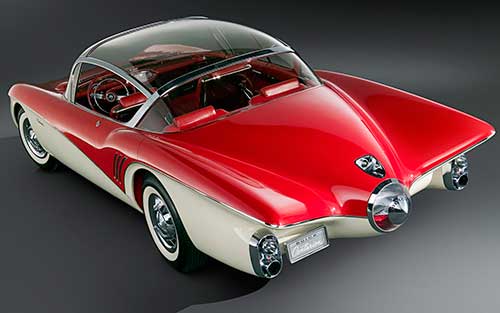
Not all concept cars were actually cars. Some were just renderings, like this one by George Lawson of the AMC Rambler Advanced Design Studio, who worked there in 1955 when Dad was assistant head of design to Ed Anderson, who came out of the Nash styling shop, and helped to kill the Italia in order to concentrate on George Romney’s vision of a simple, small, fuel efficient Rambler motor car for the American people. Still, the sizzle had to be there, and note the similarities to the Centurion. Original auto renderings can go for thousands today, since most were considered company proprietary materials and few survived:
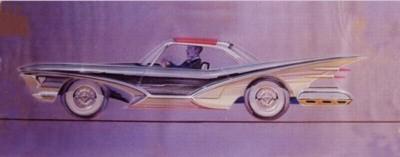
Some were physical creations made of clay and paint and a little chrome. Dad was a clay modeler for a time, working for Ed Anderson in the American Motors Design studio. The clay cars were basically nothing more than life sized models, intended to show off possible new styles to gauge public reaction. This example is from the latter days of the magnificent Packard Company:
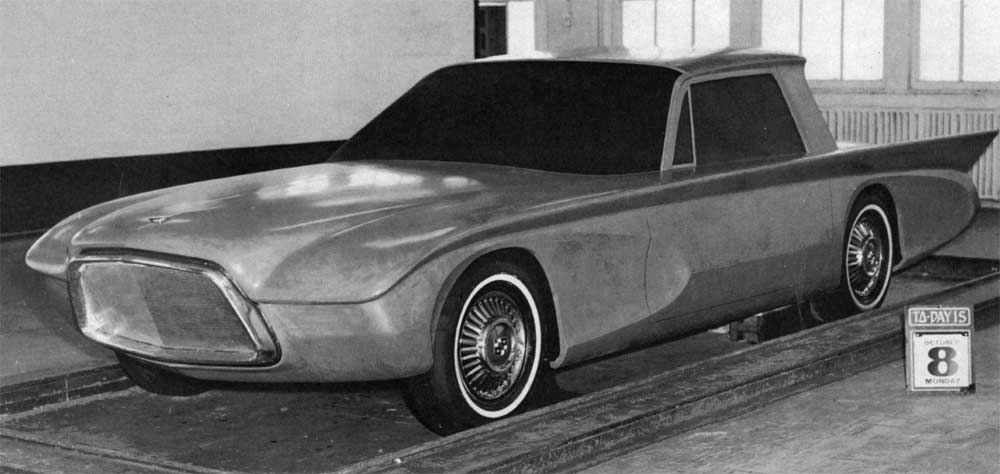
In modern times, all new model vehicles have to undergo many changes before the design is finalized for the sake of practicality, safety, compliance with EPA and DOT regulations and price. A “production intent” vehicle, as opposed to a concept vehicle, serves this purpose, though the rise of computer assisted design has minimized the need to actually build a physical automobile for each step. Here is an example of the Porsche 911S in development, with the company intending to go developing for a full production run:

Of course there is another category of “prototype vehicles,” the prototype racing cars, which had to meet strict rules for the number manufactured to qualify as “production” models to run in NASCAR stock car classes, though they were never intended to be mass production road cars. The amazing Dodger Daytona was one of those. Limited to a few thousand cars, they could be purchased by the general public. Today, which equipped with the desirable 426 Hemi engine, can go for $400,000 a copy for the survivors:
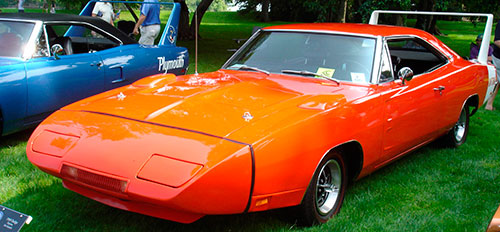
My 1991 GMC Syclone truck is another example- the stock Sonoma truck sheet metal was bolted on an all-wheel drive modified turbo-charged engine, heavy duty power train and all-wheel drive. Only about 1,500 were built, and is still known as “The World’s Fastest Production Pickup Truck,” since in time trials, it could outrun a new Maserati.

The lines blur across the categories, but that is the matter in a nutshell. It was Harley Earl’s basic premise in car design: you are not selling the steak, but the sizzle.
Copyright 2015 Vic Socotra
www.vicsocotra.com
Twitter: @jayare303
The 1955 Hudson Italia
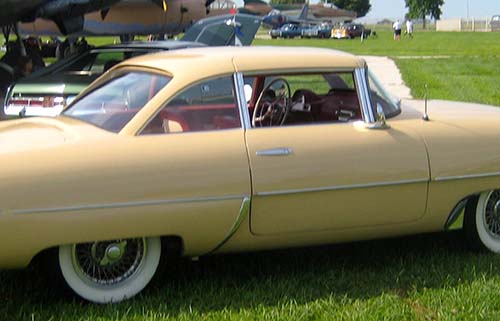
(1955 Hudson Italia at the Bill Reddig AMC Show at Grissom Aeroplex, Peru, Indiana on 08 August 2015. All photos by Socotra).
We got the fever at the car show. We always do, and leave while searching eBay motors for the perfect AMX hot rod, or a curious model Nash or Rambler Ambassador we remember from our youth. We grew up in an American Motors family with an undeniable chip on our shoulders. The fever normally passes within a couple days, but I have been known to make major life decisions before the fever breaks, and have come to terms with the phenomenon.
My brother and I were doing the first circuit of the Patriot Path, the concrete walkway that leads around the perimeter of the Grissom Aeroplex Aviation Museum near Peru, Indiana. I was lost in the airplanes and the cars parked under the wings, their proud owners seated in lawn chairs in the shade to stay cool against the rising humidity.
We rounded the C-117 Flying Boxcar and there it was. At the Rambler Rally, no less. It was a 1955 Hudson Italia, best example I have ever seen.
Let me give you some background about why a Hudson was here in the soybean fields of north central Indiana with the other rolling exemplars of American Motors iron:
Back in the car-crazy 1950s, Chrysler’s relationship with Italian design firm Ghia brought it a fair amount of time in the spotlight, a fact that did not go unnoticed by rival automaker Hudson. Fresh from the success of the Hudson Hornet in NASCAR, and looking for a way to market its new-for-1953 Jet compact, Hudson contracted with Italy’s Carrozzeria Touring on a Jet-based grand tourer, ultimately called the Italia.
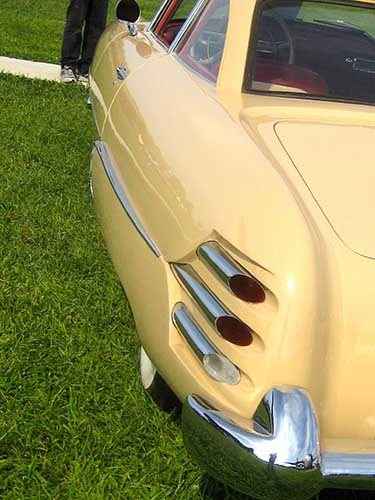
Counting the initial prototype, 26 were ultimately built.
The Hudson Italia was designed by Frank Spring, Hudson’s chief stylist, and Carlo Felice Bianchi Anderloni, his counterpart at Carrozzeria Touring. The Italia project was a consolation prize for Spring; his initial design for the Hudson Jet was so radically altered by the time the car hit production that Spring threatened to quit. To pacify him, Hudson management dangled the carrot of a concept sports car, something that Spring had long pestered the company’s management to build.
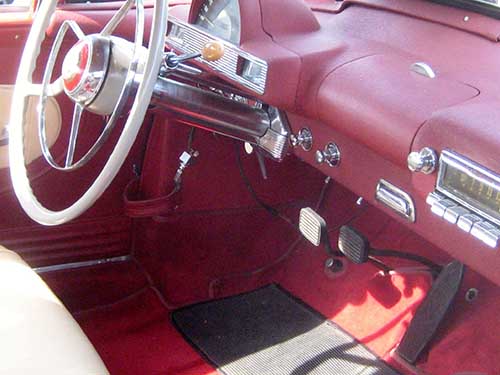
Designing an all-new model from the ground up was deemed cost-prohibitive, so it was Spring who made the initial contact with Touring. Production Hudson Jets were shipped to Touring in Milan, where the steel body was replaced with a superleggera body of hand-formed aluminum over a frame of thin-wall steel tubing. To call the design radical is a bit of an understatement, and the Italia sported triangular fender vents above the front wheels (presumably to aid in brake cooling, though these vents were not ducted), triangular bumper adornment, a wrap-around windshield and faux “exhausts” in the rear fenders that held tail lamps, directional and stop lamps.
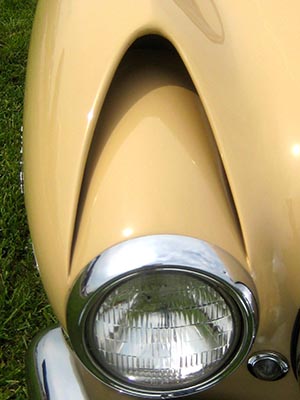
Inside, the Italia’s most unique feature was its two-passenger Mid-Century Modern seating. Each front bucket utilized a relatively conventional seat bottom, coupled with a twin-cushion upper that used foams of different density in each pad for added comfort. The gap between the cushions was intentional, and allowed the seats to “breathe” for added passenger comfort. One departure from convention was the use of leather seat belts, which were optimistically mounted to the seats themselves instead of a stronger and more rigid structure.
Though the Italia presented a more sporting appearance than the Jet, it was offered only with that model’s 202-cu.in. L-head six-cylinder engine, topped by a two-barrel Carter carburetor and rated at 114 horsepower. The sole transmission offering was a column-mounted three speed, but despite this, Hudson reportedly had plans to run the car in the touring car class at the La Carrera Panamericana. Doing so would require a run of 25 cars to qualify as a production vehicle, so Hudson contracted with Touring for an additional 25 cars after the initial prototype was completed.
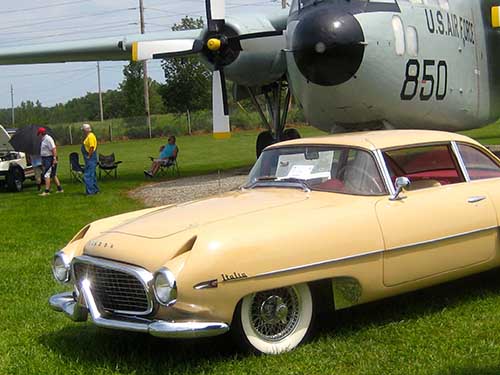
The Italia proved to be a tough sell, and not just because of its unconventional styling.
Despite cheaper labor, the expense of building the car in Italy raised the manufacturing cost, prompting Hudson to slap an F.O.B. Detroit dealer price of $4,800 on the coupe. In 1955, that was nearly double the retail price of a Ford Thunderbird, $1,866 more than a Chevrolet Corvette and $1,132 more than a Kaiser Darrin. In fact, it was even $495 more than a Cadillac Coupe de Ville, limiting the Italia’s appeal to a select group of well-heeled buyers. It is reported that just 19 Hudson dealers agreed to purchase Italias, leading to some confusion on the actual number built, shipped or sold in North America.
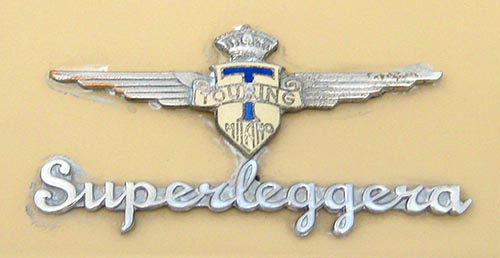
When American Motors merged with Hudson in 1954, the program became redundant with the Nash Healy exoticar featuring a big Detroit V-8 engine married to an English sports body, and American Motors pulled the plug on the Italia. In a fit of pique, Touring refused to manufacture or distribute spare parts, leaving potential Italia buyers to source comparable replacements on their own in the event of body damage.
As offered at a recent auction, a beat up Italia without engine or transmission went on the block with an estimated a selling price between $100,000 and $125,000 at Pebble Beach.
This one of the original 26 is a gem. Rambler owners are not all crazy, you know?
Of course, it does help if you are.
Copyright 2015 Vic Socotra
www.vicsocotra.com
Twitter: @jayare303
Family Matters

Increasingly, I am looking forward to closing out DC. I have been here a long time, but I think I am feeling that the run is done. I have lived in Big Pink longer than I have lived anywhere in my life (albeit in multiple units) and discussions with my brother in the rented Rav4 only strengthened my resolve to figure out what is going to be next.
I don’ t know where the ultimate destination might be; I am open to several venues, including just hunkering down at the farm, where life is quiet and real.
I got a note from my faithful correspondent in Baja this morning, and my mind drifted off to the gentle sound of surf en Española. Everything is on the table, and I even mentally tried on placid Indiana during the trip for size.
There is a lot of interesting stuff going on in my ersatz family as others in my circle punch out. Lovely Jamie hates the term, since she insists there is nothing artificial at all about our little group, though of course she has been spending more time down in Woodbridge than at Willow with her new beau.
Van Dyke and his bride Donna have already fled the capital and decamped for the Villages, a development for mature couples south of Ocala, FLA. Old Jim and Chanteuse Mary are edging toward the door as I type. I can feel a draft from the opening and it makes me a bit uneasy that I am going to be left behind.
Jim left the Willow bar early last night to return to his residence up the street without explanation, an unsettling development, since it left just JPeter and me at the apex of the Amen Corner. We filled the strange vacuum with a discussion about elegant Satchel’s earlobes, since that was the latest odd thing to occur and unlike everything else, had nothing to do with politics and everything to do with what matters in life.
“So,” I said, “My phone went off when I was attempting to dock the police cruiser at the curb outside. I couldn’t get to it, since it was on my hip under the seatbelt, and I was in the middle of the critical maneuvering phase of the parallel docking and there were no tugs available. I got to the phone once the lines had all gone across and I was walking to the parking kiosk to buy the slip for the land yacht’s berthing fee.” I paused to take a belt of my vodka-and-diet-tonic. It being the first one of the day, it had the remarkable taste of optimism.
“I looked at the phone, thinking it was Jim, since he sometimes calls to remind me that it is time to start drinking, and was startled to see Satchel’s number on the screen. I have been enamored with her since we first met at my old office, and often tell her that she would be in trouble if I was only forty or fifty years younger.”
“She is an attractive young woman,” said JPeter, taking a sip of his Happy Hour Red. “She hasn’t been around here much lately.”
“I know, and I have missed her. But there is so much turmoil in everyone’s lives these days. So, I mashed the button and called her back to see what was up. When she came on the line she sounded agitated, and I asked what was up. She said she was going to get her ears pierced and wanted confirmation that it wasn’t a big deal. That took me aback, and I was surprised that she had not done it years ago. I told her the lobes were not particularly dense in nerve-endings, and I knew from personal experience there were things much more sensitive than that and she said that is why she had called.”
“That is surprising,” said JPeter. “I thought the ladies got their ears pierced when they turned into teenagers.”
“Me too. But she said she knew that I knew about how much things hurt, and wanted assurance that it wouldn’t hurt that much. I looked up and saw legendary baker Kate Jansen walking up the street from the Willow, and I put the phone on speaker. I told Satchel that I had a veteran female available for consultation, briefed Kate on the issue, and she spoke with the voice of experience. By the time she had described the procedure, the numbing and the ease with which it was done, Satch seemed to calm down a little and Kate handed me the phone back. Then I gave her a kiss on the cheek and she walked across Utah Street to her car, saying that now she was thinking about getting another piercing herself.”
“Wonder where?” asked JPeter thoughtfully.
“Dunno. She didn’t say, but it is intriguing, isn’t it?” I got back to processing alcohol into my bloodstream and we talked about North Korea, and the latest on the debates, and the war on whatever, and we were startled when Satchel herself appeared next to me where Jon-without usually sits, pulling out the stool and swung her long, elegant legs over the seat and rested her elbows on the bar. Brilliant- and large- diamond studs glittered on her ears.
“Holy smokes, those are beautiful!” we exclaimed in unison, and brought the attention of Brett the bartender down to the Corner. He agreed that Satch had done the right thing.
“Still hurts like hell,” she said. “You lied.”
“Of course I did. Are those stones real?” I asked.
Satch looked thoughtful. “Yeah. Michael got them at Tiffany’s a couple years ago, and he didn’t know I didn’t have holes to put them in.” She ordered one of those dark beers that comes presented in a snifter, which Brett deposited in front of her with a flourish.
“You still with him?” I asked hopefully.
“Yes. We are getting married.”
I am happy that they are taking things to the next level, Michael is a good and reliable fellow, and the date for the wedding has been set for November. That was the third bombshell of the young evening, and it sparked an evolving discussion of life events, and contingency planning to accommodate them. Do the ceremony in Greece? Maybe in the ancestral village? Or at the Army Navy Country Club with the honeymoon in the Aegean?
The animated discussion of preferred islands, the dump that is Athens, and whether or not the family would all fly over there drew in a young wife from down the bar who had recently done the same thing, and a long consultation over the images of the event in the gallery folder of her smart phone.
We beat that one to death, and I offered to show Satch around the new ANCC clubhouse, which is elegant as shit. That, in turn, morphed into a long rambling conversation about marriage and babies and grandchildren, and tears came. This was like the fifth remarkable event of the lengthening evening, since Satchel’s mother was a Marine Brigadier, and her father a Leatherneck aviator.
I am much more accustomed to sardonic stoicism from Satchel than the waterworks. Hell, she even deployed to The Show as a contractor in Afghanistan when we were still trying to win the war there.
This is an unusual demonstration of vulnerability, and I realized this normally analytic and intelligent woman was bathed in emotion coursing through her veins.
JPeter announced that he had to go over and deal with his mother, who was in the rehab wing of The Madison where our pal and mentor Mac Showers used to live. “You ought to have a martini if you are doing that,” said Satch, and JPeter agreed, waving at Brett for assistance.
“It is time,” she said, dabbing her eyes gently with a napkin so that her mascara did not smear and leave her looking like a raccoon.
“Yes it is,” I said, finishing the third or fourth drink and tapping the glass when Brett slid the dirty martini in front of JPeter. “Go with it. You will never feel like this again in your life. It is the way we work as a species. Enjoy the ride. This is about life, and it is about starting your own family.”
She cried again, in bemused happiness when we parted outside the bar. I walked back to the police cruiser, musing on the marvels of life and its patterns. Me. Jim and Mary. Van Dyke and his bride. My son, who will be done with his stint in the Far East for a couple months specialized training before returning to the mid-Pacific for a few years.
I slid behind the wheel of the Crown Vic and fired up the V-8. I can’t wait to see him, and the new grandson again in a few weeks
Life. What a frigging miracle.
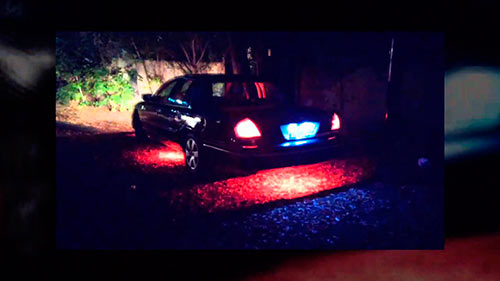
Copyright 2015 Vic Socotra
www.vicsocotra.com
Twitter: @jayare303
The Road to Peru (Indiana)

We talked about all kinds of crap on the way from Indianapolis over to Circus City for the big car show. It was great to see my brother again, with a lot of water under the bridge and some significant changes in our various relationships and physical conditions.
He had run in four of the last five Boston Marathons, and I had been very proud of him, and happy that the one he missed was the one that the Tsarnaev Brothers decided to bomb in 2013.
“If you had run in that one, would your time have put you at the finish line around the time of the detonation?” I asked. My brother nodded.
“Crap,” I said. He nodded again.
As men of a certain age do, we talked about the latest crop of aches and pains, and the fact that his marathon days are probably over, as mine were long ago. We both have problems negotiating stairs these days, and we talked a lot about options for the next place to live, centering on that fact that whatever it would be, it would not include staircases.
He looked out at the gently rolling green fields that whizzed by the windows of the Hertz rented Toyota Rav4 SUV. It was quite a step up from the usual piece-of-crap Camry. It was peppy and fun and big enough on the inside to hold a bunch of stuff; downscale from the Panzer, to be sure, but perfectly fine to roll across the Midwest. There are a lot more Toyota dealers out here than Mercedes, and a lot cheaper.
It was good to be on the road in a place that made sense. The people were uniformly pleasant and nice. The DaysInn the night before had proven to be an old-school horror show, so we were pleased to be away from it and headed for the Grissom Aeroplex where the show was going to be held. The weather on what would have been Dad’s 93rd birthday was fine. I never had a doubt about that.
There were supposed to be over forty classic American Motors cars, Hudsons and Nashes and Ramblers of all sorts. I told my brother he was going to have a speaking part, after I introduced him, and he would present the Award for Best In Show and the trophy named for Dad. Then we talked about the Ramblers we had known growing up, and the tricks and trouble we got in with the ’68 Javelin with the 343 cu in high-compression four-barrel carb.

He claimed he got it to 123 MPH on that empty interstate Congressman Jerry Ford pork-barreled into his district in West Michigan, while I had only got to about 120. I maintain to this day that it was speedometer cable-wear that accounted for the difference, but he still has the bragging rights for the land speed record in Mom’s car.
It was sultry and humid as the heartland can be in August, but pleasant enough that jeans were tolerable. At least while we had the air conditioning blasting.
As we rolled toward Circus City, we talked about the kids and what they were all up to. We hit most of the events in the news, too, with me voicing astonishment at the astonishing news of the last few weeks, unusual for what is usually the dog days of summer when people ought to be going to car shows and reading thrillers with tall cool drinks by the lake.
Being a known attorney of long standing, my brother gave me some free billable hours of experience and points to consider in the intricate legal maneuvering one of the prominent presidential candidates without orange hair is conducting, and a lot of it makes sense.
My train of thought got derailed as I looked at the tanker truck that seemed determined to pull out into the single lane bounded by the Jersey barriers in the extended construction zone, and floored the SUV to pass before the lane narrowed to make it impossible. It got my blood going, but I didn’t want to follow an 18-wheeler for the next six miles.

“From a legal and procedural perspective, it does have a certain strategic consistency,” my brother said. “You need to understand the law doesn’t necessarily follow common sense. Nice lane change.”
I said that even if they wiggle out of it (again) I wasn’t sure that the ongoing spectacle was going to play to normal people in Peoria, deftly swerving in ahead of the tanker as the orange cones narrowed two lanes to one.
Since we were actually near Peoria at the time, we slipped into a chorus of an old family song we used to sing Up North that was ancient even when we learned it as kids:
“ S. O. S., S. O. S., Captain we are lost,
Our ship is wallowing in the sea, by wind and wave we’re tossed,
Lifeboats here, lifeboats there, Hear the shrieks and groans,
The captain calls “All hands on deck!” and says in trembling tones:
“Oh, how I wish’t I was in Peoria, Peoria tonight.
Oh how I miss the “goils” in Peoria, Peoria, tonight.
Oh you can pick a morning gloria right off the sidewalks of Peoria.
Oh, how I wish’t I was in Peoria, Peoria tonight.”
We couldn’t remember any more of the lyrics and my brother looked out the window at the agricultural tableau as it slipped by.
The bounty of the soybean fields in long undulating fields of green made it all seem sort of plausible. Out in the middle of America, there are certain things that you know are true just by looking at them.
That is not the case back home in Washington, DC, but it is only to be expected. It isn’t really anywhere anyone calls home anyway. Peru, IN, the Circus City, is.
Copyright 2015 Vic Socotra
www.vicsocotra.com
Twitter: @jayare303
“How I Wish’t I was in Peoria,” Words by Billy Rose and Mort Dixon.
Music by Harry Woods
Copyright ©1925/1951 MPL Communications
Circus City

(A total of 42 cars participated in the Bill Reddig Rally at Grissom Air Park near Peru, IN, on Bill’s birthday yesterday. Photo Mike Socotra).
As discerning readers well know, Peru, Indiana, is known as the Circus City.
Back in the day, the rails going north and south and east and west all intersect here on the banks of the Wabash River, and it was a logical place for the National and Regional Shows to hang their hats in the winter.
Composer Cole Porter is from here, a real sophisticate. Actually, he is still here, over at the cemetery.
And here my brother and I joined the Hoosier American Motors Club to celebrate the Summer Show named for our Dad.
It was very cool- the cars were on display under the wings of some great historical airplane at the Grissom Air Park, outside of what is left of the old SAC base outside Peru. I am typing in an upstairs room at the Knighta Inn on Rt 31, surrounded by soybean fields.
We are traveling in a bit, me headed back to DC and my brother to the Golden West. So, this will have to do for the trip. More tomorrow, ins’hallah.
All the pictures are up on my Facebook page, though, more than a hundred. It was a pretty cool day.
Vic
Copyright Vic Socotra
www.vicsocotra.com
Twitter: @jayare303
Attribution

Sorry if I got you alarmed yesterday. After I wrote about the Chinese weaponizing the personal data they stole on you and me and all my friends and family, it turns out that particular shoe has not dropped yet.
A few minutes after mashing the button on my trusty lap-top the word began to spread- from NBC and The Daily Beast that Pentagon sources were saying the attack- the “sophisticated spearphising” that gained access to the DoD unclassified (but sensitive) network connected to the internet actually came from the Russians.
I have always contended that attribution is the toughest part of the cyber game, since hackers can jump around and coopt other people’s machines to do their dirty work, and then hide behind yet another server with tools to render them anonymous.
They can cover their tracks well, and even lead investigators to suspicious entities that we would blame any way.
So the fact that this may have originated as a Kremlin plot doesn’t mean that the stolen data in China hasn’t also be compromised as thoroughly as Hillary’s private server was.
It is a mess, and despite the gravity of the situation, there doesn’t appear much alarm. Too hard to understand, I suppose, and people might begin to not trust anything.
I got there a long time ago.
The latest version of the story is that the Russians attacked the emails of 4,000 military and civilian personnel, and as of yesterday the system was down for eleven days.
Senior government officials claimed the hack represents the “‘most sophisticated’ cyberbreach in U.S. military history.”
The attack occurred only 16 days after Marine General Joe Dunford, nominee to be the next Chairman (and first Marine) of the Joint Chiefs of Staff. He testified before the Senate Armed Services that he considered Russia to be the greatest threat to American national security, ahead of the PRC, North Korea and ISIS.
Looks like Joe ticked off the Bear. Oh well. I think the price of oil at $45 a barrel is enough for Mr. Putin to worry about, since at those prices he will be bankrupt soon enough. But bankrupt people with nuclear weapons still concern me.
What is the Joint Staff doing about it? They are “creating mock hacking scenarios” that must be completed before personnel can again access the system. As I said yesterday, if the adversary already knows your spouse, kids, duty stations and addresses for your entire life, I don’t think it would be very difficult to fool you into thinking you are communicating with someone you know.
Just like this email. Wait, don’t click on the link!
Welcome to the brave new world. I just don’t know to whom we can attribute it’s creation.
Copyright 2015 Vic Socotra
www.vicsocotra.com
Twitter: @jayare303
Weaponized
What just happened to the Joint Chiefs of Staff ought to make us very nervous. Really nervous.
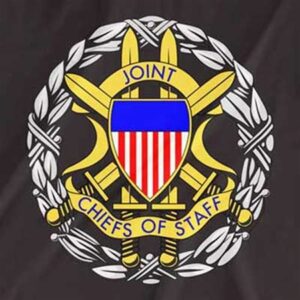
Sorry- the unexpected and untimely death of a peer officer caused a rupture in the carefully crafted Socotra Production Plan, which would have lurched back to the sawn of the modern Iranian Continuing Crisis.
Something else happened this morning that brought me up short, and I need to help you work your way into a war that is in progress. Right now.
Many of you may be aware that the email system of the Joint Staff was hacked last week, and it was such a big deal that the mainstream media outlets only mentioned it only in passing. We are getting desensitized to news of cyber breaches, and even the devastating theft of personal information from OPM was a passing story that was dropped as soon as a sacrificial lamb was slaughtered, the Director forced to resign, and everyone moved on.
That wasn’t the end of it, I am afraid, and the JCS hack demonstrates that it really is only just beginning. To its credit, CBS National Security Correspondent David Martin gave us the basics:
“The Joint Staff’s unclassified email system which was hacked during the last weekend of July remains off line over a week later…The reason cited is “a new sophisticated intrusion” of the kind that could only be mounted by a state actor…Those affected by the attack are the roughly 4,000 mostly military personnel who work for the Chairman of the Joint Chiefs…The Joint Staff took its unclassified e-mail system off line because of some suspicious probes over the weekend of July 25. The classified network is not affected, and senior members of the Joint Staff were provided with an alternative means of exchanging unclassified e-mail…”
That is all true enough, but routine, unless you actually know a bit about how the military communicates with itself. That is the problem with reporting about it; the reporters don’t know much about the three network security levels: Unclassified (and For Official Use), Secret and Top Secret. According to the story, only the lowest unclassified network was compromised. It is password protected for access, but open to the world wide web.
Secret-level material, the “compromise of which could cause serious damage to National Security” is protected and not directly connected to the web and encrypted, though it rides on commercial fiber optic circuits. Top Secret and Special Compartmented Intelligence (Grave Freaking Damage) is transmitted via the Joint Worldwide Communications System (JWICS).
Theoretically, nothing can leak between the levels, but there have been mutterings for years that unauthorized modifications to the network connections have been made for a variety of reasons related to combat operations or the convenience of remote users. I can’t prove it, and won’t try. I am suspicious.
But let’s just confine ourselves to the lowest level network, the Nonsecure Internet Protocol (IP) Router Network (abbreviated as “NIPRNet,” but commonly written “NIPRNET”). It is a private IP network used to exchange unclassified information, including information subject to controlled dissemination, and also provides DoD users access to the internet
You can see both why this is a pretty big deal, since sensitive controlled information is contained on the network, and you can also see why people’s eyes glaze over rapidly when anyone starts to talk about it.
Think about the Target stores data breach and you sigh and try to recall if you used a credit card there while the numbers were being harvested. That is small potatoes.
Get into the NIPRNet and you have gained access to records, files, sensitive data and all sorts of things related to national security. Low level, perhaps, but once in there the whole picture can be pieced together. This was huge.
But it was this morning that I finally put the two pieces of how dangerous this digital world has become.
This morning, the word was that the Joint Staff had been breached by sophisticated “spearphishing” attacks.
You have got them yourself. Perhaps you noticed, and perhaps you clicked on a link provided ostensibly from a friend, or got the bad news from several people in your address book that you have been hacked, and someone is sending out notes purporting to come from you, but which actually contain mal-ware designed to compromise your security, turn your computer into a component of a bot-net or steal all your money.
Hackers stole every the contents of every digital address book at America On Line and Yahoo a couple years ago- I know what a pain that is since my information was part of the theft, and I actually saw it in real time as the contents scrolled across my screen as I frantically tried to change my password.
But that is low-level stuff, not the work of a state actor.
Here is what a nation state does: it steals the contents of your health record and your personal data. They hit the insurance companies. That is 90 million of us, so far, and that is only what we are aware of. Social Security numbers, doctors, treatment records, all that stuff.
A nation state hits the Office of Personnel Management, and strolls off with the contents of the huge personnel files all people seeking a clearance in the U.S. Government have to fill out. 23 million are affected. All digital files since they started doing that in 2000 are affected. Since those have to be filled out every five years (We call them “bring-ups’) the Nation State that took them knows who we are, who our friends are, all personal and financial information and polygraph results are gone.
Now once in possession of that information, and with a little search on who is on the Joint Staff, you have the ability to send completely legitimate mail to people with enough personal information on who allegedly sent it to be completely plausible.
That is “sophisticated spearphishing.” We are so screwed. How will anyone ever be able to trust anything digital?
The Joint Staff may recover- I certainly hope so. But this little tidbit of information means the other shoe has fallen. We know what is being done with the data they took. They are now targeting where we work, and using the information to trick us into thinking we know who we are talking to. This means our data has been weaponized, and we are now entering an entirely new landscape.
Think of this as a little test. Think of the other targets- senior executives in finance, or managers of the power or transportation grid.
We are so screwed. And we don’t even realize it is happening now.
Wait until they decide it is The Day. Then things are going to get very interesting indeed.
Copyright 2015 Vic Socotra
www.vicsocotra.com
Twitter: @jayare303
BOHICA
BOHICA
On Gonzo Station
Gentle Readers,
The odd events of the holiday season thirty-six years ago seem to resonate today. I think, on the whole, I prefer ancient crises to the ones of the moment since we know how it all turns out. Wait, this is still going on, five or six wars later, the only regional constant, and we are still arguing about what should be done. Sigh. Plus ca change, you know? Anyway, let’s take a look at Christmas of 1979, which features your Midway roustabouts and Indian Ocean Rangers confronting the Iranian hostage-takers and the Adventures of the Soviets in the Great Game.
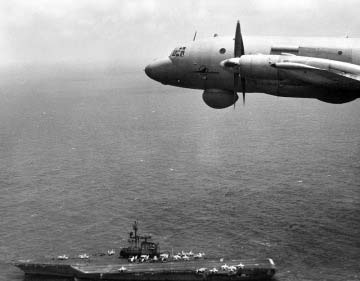
(Soviet IL-38 May overflies Midway Maru (CV-41) in 1979 while under escort by Navy fighters. Photo USN.)
The crisis played itself out over the holidays and got weirder, if that was possible.
The Navy tried their best for us. They brought out little shoeboxes sent from the families back in the Nagishi Heights Housing Area back in Japan filled with baked goods and gimcracks.
For some reason best known to themselves, they wouldn’t allow them to be sent to the single guys, but c’est la vie, you can only eat so many stale Christmas cookies anyway. The popular hit was the rum cake that almost collapsed into the basic liquid ingredient.
They even arraigned for the shipment to arrive on Christmas Eve, and it coincided with a massive letter-mail delivery that brought an astonishing effusion of greetings and support from the States. It was comfort for a generally depressing time.
The Iranians continued the little carrot & donkey ploys at which they have become so adept. They invited the delegation of clergymen from the States to minister to the spiritual needs of the captives- remember, Khomeini is a holy guy- and of course that jerk William Sloan Coffin was included. I didn’t like his sanctimonious prattle during the Vietnam War, and his initial pronouncements from Tehran reduced me to slavering outrage.
“Mr. Coffin, do you think this visit will be used to further Iranian propaganda?”
“Well, I don’t mind being used in a good cause….” Jesus! At least he is an honest tool.
NBC had joined in the media spectacle, providing the Followers of the Line of the Imam with a free, uncut forum for the students to expound their views to the audience in the States. It was starting to cloy a bit, but the networks are only the creatures of popular demand, I suppose, and the news was anything but exciting. I could feel us drifting off page one back home, even though all the media we could get was at least days old, if not weeks.
Newsweek came out with a pretty analysis of the situation and had a marvelous color picture of Midway (CV-41) labeled “Kitty Hawk Underway.”
Fear and Loathing on Gonzo Station.
It was during the mid-Christmas period that we began to get inklings of other events in the wind. Evidence was beginning to pile up of a massive Soviet buildup on the Afghan border. The Muslim insurgents had made steady gains against the Amin regime, which had so recently taken over where the Soviet-backed Taraki government had failed.
An odd pressure has been exerted by the Soviets on us to go ahead and make a military move against the Iranians. “Go hit them” they said, “Don’t pay any attention to our public pronouncements.” It seems sort of tit-for-tat: they encouraging us to act in order to justify action of their own.
Apparently, we will acquiesce to anything but a permanent military occupation of Afghanistan. During the early phase of this evolution I was all in favor of a strike of some sort to assuage our impotence over the situation. We were getting bizarre indications from the Indians, too. New Delhi had publicly condemned the taking of the hostages, privately told the Iranians they supported them, and also told the U.S. that they wanted us to make a military move. It was all very strange.
In the heat of the moment, I could only agree this crisis makes for unlikely bedfellows.
Frank Oxsen, one of the two VA-115 A-6 Air Intel guys, was in his element in MSI. He was the first to come out with a wild assessment that had the Soviets moving in force against the Pakistanis, It sounded incredible, but he had some good facts to back it up. Curiouser and curiouser, I thought. What were the Soviets up to? We pondered the matter over coffee and cigarettes each morning before the cyclical briefs began.
Frank freely admits he is a paranoid type, but also adds the corollary “just because you are paranoid it doesn’t mean they are not out to get you.”
I had to take it very much to heart, after all, my private timetable had the Soviets on the move for a major confrontation in the early ’80s, and the longer I was in Asia, the more it
seemed like the first target would be the Indian Ocean area, the path to a warm-water port that was the essence of The Great Game. Their consistent moves In Africa, flanking the oil lines. The reinforcement of the Malagasy Republic: the odd port visits to the Seychelles in the Spring, and the dramatic transit of the helicopter carrier Minsk (CVHG-117) escorted by two KARA-class cruisers, Petropavlovsk and Tashkent, along with amphibious assault ship Ivan Rogov (LPD 132), and the T-AOR Boris Butoma.
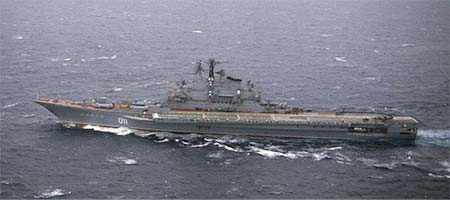
(Soviet CVHG-117 Minsk, a Kiev-class helicopter cruiser, transits the Indian Ocean. A YAK-38 Forger VSTOL fighter is spotted near the ramp. Photo USN).
Still, with all the fanfare about Hanoi’s big New Year’s offensive to wipe out the last of Pol Pot’s boys in Kampuchea, and my visceral concern for the ladies of Patpong Road in Thailand, I had thought the pressure might come in the Far East.
I had to admit that the events, when they began to play, were stunning. It was the Great Game after all, nothing new under the sun. The Soviets were classic. A violent coup left Amir colder than a Mackerel, with his son and his mother joining him in the funeral pyre. The assault on Radio Afghanistan followed, with broadcast of a pre-recorded broadcast of Karmel’s conciliatory take-over address as soon as the studios were occupied.
Evidence that the same broadcast was being played from clandestine stations in the Soviet Union came in, just in case the action at the radio station was held up. Within minutes, the troops began rolling out of the bivouac areas around the International Airport in Kabul to key points in the city. According to Frank, about 80% of the entire Soviet airlift capability was being utilized to bring in more. It wasn’t Pakistan, not just yet, but it was the largest military action by the Soviets since Czechoslovakia in 1968,
It was great. The propaganda that began to flow was outstanding, and it made me long that we had such an asset at our command. Immediately, Amin became a puppet of the CIA; the incursion was aimed at “outside forces” trained by the U.S. in Pakistan; the military adventure was completely in accord with Article 51 of the UN Charter and Article 6 of the Afghan-Soviet Friendship Treaty.
That, and the entire evolution was provoked by the presence of U.S. Warships, conducting training operations in international waters off Iran. In other words, us.
You have to stand back and be amazed by the Soviets. The Cold War has not ended for them, and a case can be made that the hot war never did either.
The bald-faced effrontery of the rhetoric was nothing short of superb.
The Iranian reaction to it all was just as delicious. Sadegh Ghotbzadeh, the Foreign Minister was utterly sublime. Examine this bit of pretzel logic for a moment: the Soviet Intervention “…hurts the struggle against U.S. Imperialism.” Dig it, the largest Asian atheist power moves armored divisions against a contiguous neighbor, whose Muslim guerillas the Iranians have supported with food, shelter and weapons, and it “Hurts the struggle against U.S. Imperialism.”
I said it over and over during the cyclical air ops briefs: Something was seriously wacko with the Iranians at the leadership level. Or was it more than that?
Thinking it through, I was struck one morning in the shower (it was early, and no one was around, so I was consciously wasting hot water) by the notion that had run though my mind before. The Soviets were running the show in Iran, too, Marxist students, professing a conservative religious line, were part of the group at the Embassy, The Students had sent apologies to the Soviets when Afghan students had the temerity to assault the Russian Embassy in Tehran, and rip down the Hammer and Sickle,
Advisors around Khomeini were known to have KGB links. The Russians wanted us to make a military move against Iran. The whole hostage taking was orchestrated to radicalize the Iranian Revolution, and to force the Great Satan (that’s us, fans) to make the first move against a Muslim nation.
I very nearly dropped the soap, which despite my fondness for my shipmates is not anything you want to do if you have been this long at sea.
Running over one of the morning briefs I gleaned the following interesting notes. The Governor of Kandahar Province had received a note from the rebels demanding that he join them against the foreigners- Ferengi- who had invaded the homeland. He locked up his desk and turned over the government to them.
Rumors are that the Soviets were planning at least ten garrisons for Afghanistan, with a Division sized unit at each. That would amount to over a hundred thousand deployed combat troops. They are going to reach Vietnam-sized proportions in a hurry. They had occupied Jalalabad, a strategic city in the Khyber Pass and were moving down towards the Pakistani border.
The troops they had used for this operation were primarily from the Asian SSRs, and the Soviets were counting on the fact that this would alleviate some of the traditional xenophobic reaction of the Afghanis to ferengi of any stripe. They had even instructed the troops to go down to the Bazaar and speak the local Pashtun language. Better yet, they sought to eliminate the financial base of the rebels by changing the currency.
Henceforth, all assets were frozen, and the new currency was going to be the Ruble. God almighty, any illusions that this was going to be a short stay went up the chimney.
The only thing that made me smile about the whole thing was the suspicion that one hash smoking hill-tribesman with an AK-47 was better prepared to deal with the snows of winter than a Motorized Rifle Division. The fact that no one since Alexander the Great had been successful in bringing the country underfoot may also apply. I believe that the Soviets have bit off more than they are going to be able to chew on this one; and I hope that the Muslim world will take note of the Bear and his avaricious eating habits. At least some of them have anyway.
Gold closed on the London Exchange at $635 an ounce. It makes me weep that I didn’t
purchase Thai gold bhat chains at a paltry $200 an ounce last year in Bangkok. I like the idea of jewelry you can spend on the way to the airport to get out of town ahead of the tanks.
But what is it the good old United States is supposed to do about this one?
Our delay in the Iranian crisis was a two edged sword. I was glad that our delay- hesitation- in the Iranian crisis made the Soviets take the first move in Afghanistan. Things are out in the open now, though, that perhaps a junior British intelligence officer of the Indian Army might have felt very much the same way in 1933 or so.
I was talking to one of the Flag guys about the situation, and we could come up with no answers except the unpleasant ones. It seems like a bad LSD flashback from the old days. Disoriented and helpless; an inestimably odd feeling to have while living on a weapons platform that carries enough Silver Bullets to lay waste to the entire nation of Iran.
There have been casualties here already, though they are peacetime deaths, of course. “Dulce et decorum est pro patria mori“ right? Kitty Hawk has lost eight air-crew already. I mentioned the four guys who died in the EA-6B down by Diego Garcia. They had lost two before ever arriving in the Indian Ocean. Last week they lost two more in an A-6.
A squadron skipper was involved in the mishap, though that is sort of a tame word for the fatal accident. We have heard a cat malfunction was involved; a couple of the enlisted guys were on the Kitty when they showed the video-tape of the evolution. In any event, they got out of the jet but died anyway as they came down in the drink.
That makes Bucks and Chief who lost one of our Phantoms off the cat stroke the only successful ejections in the Indian Ocean in 1979. The thought of losing that many guys on a seven-month cruise is almost unbelievable here. Corporate memory barely lingers back to our last fatality, knock on steel bulkhead.
It is a business with some inherent dangers built-in, but I can’t help thinking that a permanent bunch of Asiatics such as our merry band of outlaws have more resilience to the frequent “bad deals” of the forward-deployed Overseas Family Residency Program (OFRP).
Spirits were subdued over the holidays, but it was still very much business as usual. There is a level of professionalism that is difficult to duplicate in any other environment. Mixed with a certain fatalism, naturally, as we always know that if there is a bum deal, we will get to it first, and get back last. Nothing personal, you understand just part of the business.
Bend over, here it comes again. BOHICA.
At 1603 on the Seventh of January we had a stunning example of precisely what I am talking about. It was our 56th day on The Gonzo, and things were going along just like usual.
Loud noises, tremendous bangings and smashings radiated through the ship. One catapult was down for some reason or other, and A-7Es were parked along the forward stretch of the port cat track. The flight schedule had been adjusted with the delicacy for which the planners in Strike Ops are noted. I was not briefing on that particular day; I was in the Planning spaces to catch up on the shrewd political analysis of my compatriot, Dean “The Dream” Whetstine.
The news was about usual. Iraqi Naval units looked like they were going to deploy and maybe assault a couple islands contested with the Iranians. Heavy fighting continued in Afghanistan; in the west of the country the Soviets were building with ominous force near the Iranian border. The Soviet generals, perhaps with the Order of Lenin dancing before their eyes, were calling for more reinforcements. It sounded so much like Vietnam I had to laugh. “Just another hundred thousand troops and we will have this one licked!”
Or, as the Admiral says, “Just another couple of cycles of air operations today and we will really paste those characters,” Plus ca change and all that shit. I don’t have time for that. I have to generate another episode of Nick Danger.
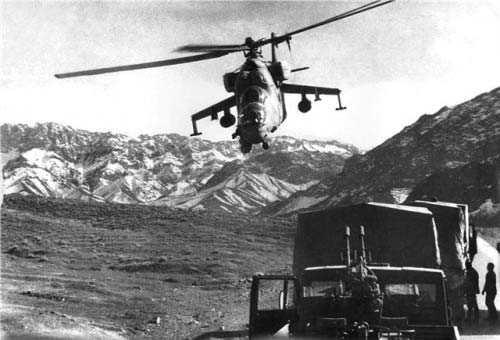
(Soviet MI-24 HIND Gunship lifts off to engage Afghan targets, 1979.)
Copyright 2015 Vic Socotra
www.vicsocotra.com
Twitter: @jayare303
